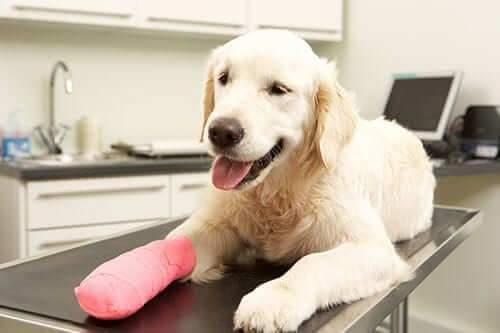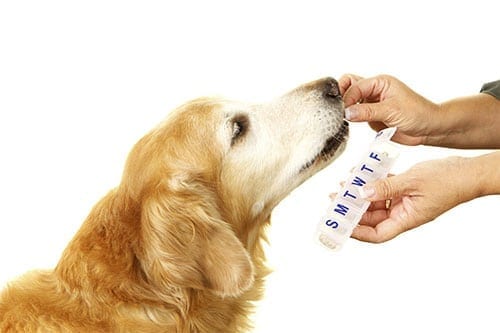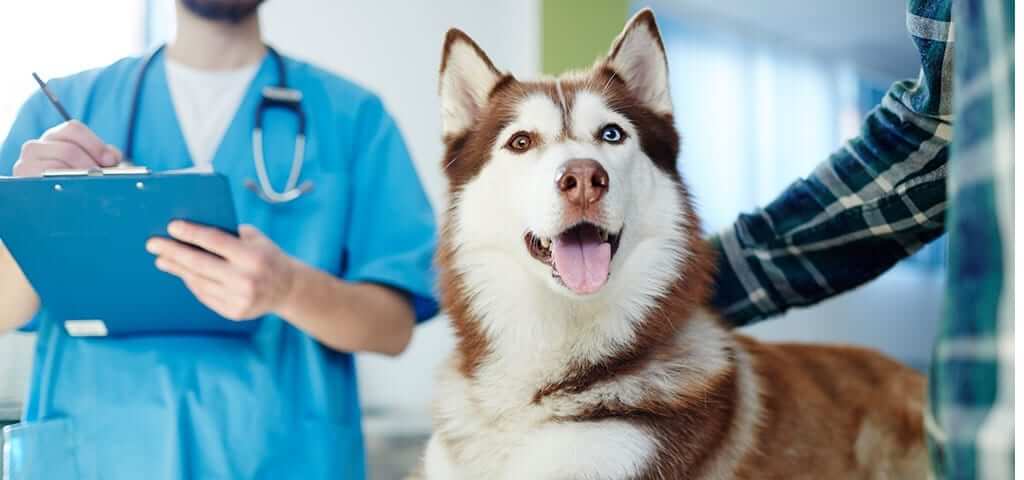Oh how modern veterinary medicine has changed for the better. I remember back when I was trying to get into vet school in the mid 1980’s. Oregon State University required I had a small quota of hours before applying, so I volunteered one summer at a mixed animal practice in Woodburn, Oregon. They treated llamas and goats and dairy cows along with dogs and cats. It was a regular James Herriott kind of clinic. Today, I’m here in Molalla, Oregon, visiting my mom this week and I think back to that summer. How veterinary practice was just 30 years ago is vastly different than veterinary practice is in modern times.
In House Labs
That summer of 1987 when I volunteered at that little country clinic, running blood work was much more effort than today. The lab would send couriers to pick up samples from practices as they do today, but it took days to get information back. You might still think it takes days to get information back if you base this on how long sometimes it takes your human family doctor to call you, but the reality is that your vet likely has most blood work back within 12 to 24 hours. And the same is true for human medicine! That summer at the little country clinic if we wanted labs within a day, say for a particularly ill pet, we had to take it to the local human hospital and then they would call us on the phone and we’d transcribe the results for the veterinarians and know that species differences existed.
Fast forward to 2018: My blood samples from my small animal clinic in South Florida goes 2.5 hours to an Orlando lab and I typically get results for most tests in 12 to 24 hours. That’s amazing! When I have a very sick patient and need results sooner (realize you don’t get quite as comprehensive lab work for in-house analyzers compared to an outside reference lab), I have a chemistry profile in my hands about 14 minutes after I’ve pulled the blood from the pet. Again, that’s amazing!
Computerized Records and Information
I imagine most folks don’t appreciate how much computers and the Internet have transformed medical care. There is no excuse for mistakes from illegible handwriting or missing medical reminders. The computers automate and populate the medical records. If a client moves to another state, medical records can be emailed to the new veterinarian in 3 clicks of a computer mouse. Just the other day I was reading a chart of a new patient. The prior vet had old fashioned handwritten notes which are very rare these days. I swear I couldn’t read much of the record at all. I doubt even the vet who wrote it could have read his own scribble. What a pity.
The Internet has made education and research so simple. My associate doctor at my clinic just turned 29. She has never known a world without the Internet. All I can say is that college and vet school were much harder prior to the magic of the Internet. The learning tools online are fantastic. (Sounds like I walked uphill in snow each way to school, huh!) Nowadays, in my 25th year of medical practice, I can read up on nearly any topic any time of the day or night on veterinary sites such as the Veterinary Information Network or Vetfolio. Even sending “homework” for clients is easy. I used to have a file cabinet full of educational articles written in layperson words to educate clients about various diseases to copy for clients. Now I can send them links to articles on veterinarypartner.com or other trusted websites written by veterinarians.
Digital Radiology and Ultrasound

Many veterinary clinics now also have in-house ultrasound. I still send patients to my local internist or radiologist if a pet needs a cardiac or abdominal ultrasound, but I often take a peek myself with my ultrasound as well. Even though I’ve been taking ultrasound classes for 4.5 years, I still consider myself a novice. And yet, you’d be surprised how often I stumble into a diagnosis. The doctors and techs at my clinic use our ultrasound between 5 and 10 times per day, even if just to get pee samples for profiles.
Pharmacies
Thanks to the World Wide Web, folks can have their pet’s medications and foods delivered right to their front doorstep. I love this! Many of my clients in south Florida are seniors and have trouble getting to the clinic to pick up pet food and meds. My younger clients may simply like the convenience. Some of my clients are “snowbirds”, meaning they escape the heat and humidity that plague south Florida each summer. If clients need med refills, my staff can enter the med through an online pharmacy and we no longer have to run it to the post office. It’s fully automated. ADW Diabetes clients certainly know the value of shopping online for medical supplies.
Therapeutic Laser and Arthritis/Pain Meds
I’ve mentioned my therapeutic laser in prior articles. I especially appreciate my class 4 therapeutic laser for my arthritis patients. I’m proactive with analgesics for my patients and I try my best to offer options beyond anti-inflammatories. Anti-inflammatories are very effective analgesics, but they come with unwanted side effects, particularly to the liver and kidneys and gi-tract. Therapeutic lasers decrease inflammation and pain without those side effects. My personal cat who is nearly 14 years old has horrific arthritis. I laser her knees and elbows and lumbar spine twice a week. And while I’m at it I’ll mention my new fave arthritis anti-inflammatory for dogs: Galliprant. I find it to have similar efficacy to Rimadyl, but has a much better safety profile.
Lastly, medical marijuana has reached veterinary medicine. My arthritic cat, Twinkle Toes, has dramatically improved since I started her on Ellevet, a canabis treat. There is no THC in Ellevet, only CBD. It is the THC in marijuana that makes folks act “high”. She doesn’t get a high nor act goofy as there is no THC in the Ellevet. She is getting around better than she has in a couple years. It took 2 or 3 weeks after starting the Ellevet chews before I noticed a difference, but I want to get on a mountain and shout out how much it has helped her. Have a chat with your veterinarian if your pet has chronic pain. The Ellevet brand was recommended to me by a veterinary surgeon. My cat refused the prior pet brand of CBD that I had tried. She gobbles up the Ellevet treats. I’d say 9 out of 10 pets at my practice who I’ve started on Ellevet have found it tasty. (The oil smells pretty funky, but most pets like the chews.) it can also be used as an appetite stimulant. I’ve seen dramatically improved quality of life for several patients on Ellevet.
Other Meds That Have Made Practicing Medicine Better

Flea and tick products are another area of huge advancements in recent years. Nexgard, Bravecto and Simparica (afoxolaner, fluralaner, and sarolaner respectively) are all oral meds that kill ticks and fleas quite rapidly. I’ve heard these referred to as the “Laner Sisters” which sounds like a 1950s singing group. The Laner Sisters often kill the ticks before there is time for disease transmission. Tick bourne illness such as Lyme’s disease is a big deal, especially on the east coast. Another nifty purpose for those products is for demodex puppies. I see demodex patients a couple times per year. Demodex is a skin mite. We used to have to treat demodex puppies with daily doses of ivermectin or smelly dips for months on end. Now I can simply reach for some Nexgard.
It is a joy to practice veterinary medicine these days. The advancements in pet care have been truly amazing!
Have a question or comment? Then post below! I always enjoy hearing from my readers!
NOTE: Consult your veterinarian first to make sure my recommendations fit your pets special health needs.







Hi Dr. Joi – We have an 80-lb husky who has been just diagnosed with diabetes. Our vet recommended 15 units of Vetericin 2x a day. I understand that the insulin is based on the weight, which I’m thinking must be related to expectation about how much food the dog is eating. Our boy eats 1 cup of kibble in the morning and 1 cup in the evening. This amount is less than the suggested amount for the food. As a diabetic myself I thought I better reduce the insulin amount because of the food disparity. I am glad I did – I gave the injection 20 minutes after he ate per the vet’s direction but he was so lethargic and slept for 4 hours after the initial dose. I am thinking this was due to hypoglycemic issues. I’ve since purchased a glucose monitor so I can more carefully track the levels. My question is, what type of reaction might we see if too much insulin is given? We gave 8 units in the morning, then reduced to 5 units for dinner – dinner time was better, but need to check on the blood sugar levels.
Your thinking is spot on. A low blood glucose can make your pet sleepy. The most common clinical sign of a low blood glucose is no sign at all. If it gets below 30 mg/dL a pet can seizure.
When we run a blood glucose curve we check it every 2 hours from one 8 meter toon til the next. If it drops below 150 we check hourly until it starts to rise. We typically do a blood glucose curve 5 to 7 days after starting insulin or changing the dose. Spot checks are good if you think something is unusual like when your sweetie slept and you though there was hypoglycemia. Good job getting a meter!
When starting a pet on insulin we like to “sneak up” on the dose. If we start too high we may never get the dose correct. Each diabetic needs a different dose and that dose may change over time.
Have a chat with your veterinarian.
My 14 lb Min Pin has just started experiencing spike at his 5am BG check up to 300 to 391 highest. She runs 170 to 190 during the day and gets her insulin 1.0U at 5 pm after her dinner of 60 grams of Purina Pro Plan Salmon/rice for sensitive stomachs. She eats 5am and 5pm with insulin given right after meal. Treats for shots/tests are fresh green beans, celery (chopped in small pieces; she gets a spoon of plain pumpkin at noon and once in a while a small piece of white meat turkey (no skin).
Why the high spikes after sleeping all night comfortably? Any suggestions appreciated.
Nancy, this makes sense for his glucose to be high right before the next dose of insulin. Good job checking the blood glucose at home. If this is different than it had been, please chat with your vet who has examined your sweetie.